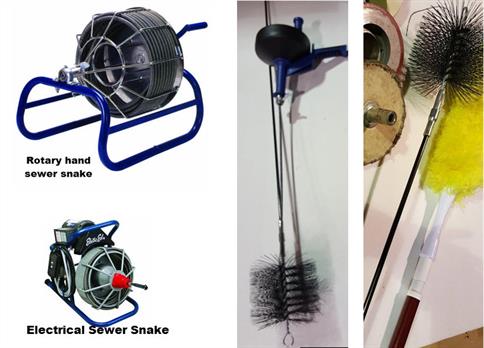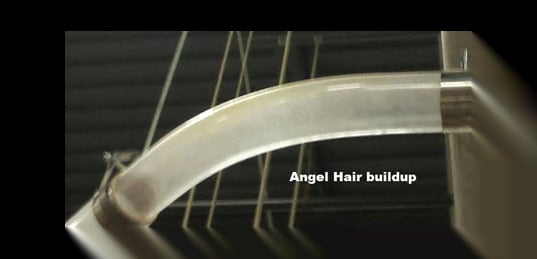Dealing with Angel Hairs
Angel hairs in pneumatic conveyance is a longstanding problem. It certainly is not welcome in transparent tubing.
Angle hairs are described by Theile as “those fuzzy, fitful, filmy pieces of plastic that drive us crazy, and. there is nothing angelic about them.” Any Google search on “Plastics Angel Hairs” will produce a host of good articles. Among them are Theile’s “Avoid Those Devilish ‘Angel Hairs’” in Plastics Technology Article: 8/23/2011.
Also for a recommendation, a similar PT article on eliminating angel hair as well as an Ineos article that addresses common misconceptions and systems design.
Angel hairs are unsightly in transparent tubing, but using steel, aluminum, or opaque plastics tubing only hides the problem Angel-hair formation is often worse in metallic tubing.
On our end, we have had many customers over the years ask us for advice. Recently one customer asked us if we had a special technology to polish the ID of the tube to eliminate their angel hair problem. We suggested, rather, not a polish, but scarifying the tubing in their trouble spots (often in bends).
We have a simple and inexpensive method. Scarify your tubing with a chimney-sweep brush attached to a rotary hand (or electrical) sewer snake. This will scarify your tubing at the place of the angel-hair formation (usually toward the beginning of a bend or at the entrance of hot closures into the pneumatic system).
To power the brush, get either a rotary hand sewer snake or an electrical model. This will allow you to go deep into your system without dissembling it.

Just remember that those fiberglass shafts can splinter so use gloves!


Besides scarification, we also have some adaptations for our tubing sweeps. First, always go for the longest radius possible. Tight radius bends produce a high centrifugal force that pushes caps and closures against the bend wpall and leads to rubbing and heat buildup.
On Apr 1, 2009, Shrikant Dhodapkar (and others) published “Understanding Bends in Pneumatic Conveying Systems” in Solids Processing. The document is widely available online as others. The article has excellent graphics on various bend styles designed to minimize abrasions. This is nothing new to us. We have made expanded bends for decades out of CAB.
The bend design slows down the velocity of caps and changes their orientation within the air stream. It helps eliminate streamers and dust.

We make such bends to order and offer a wide variety of bubble bends.
We also supply an inline open bell that increases the inside area of a tube gradually. When such a bell is installed before a bell it slows down the cap speed and thus reduces the friction of fast-moving caps and closures before entering the bend. Picture Pending
Other methods to reduce frictional buildup include mitering bends with smooth to abrupt sections. The mitered sides cause a scattering of the caps while dissipating energy. The re-direction of cap movement allows caps to disorder and bounce cap to cap. Pictured are short-section mitered elbows and smoother sectioned bends.


Finally, we do produce, to order, ribbed transparent tubing. The ribs on the inside of the tubing provide a linear airflow while reducing surface area for rubbing. Picture Pending.
We continue to work on our end to provide clear transparent tubing for our customers with a minimum of angel hairs. On our customer’s end, the system design should consider in order, the velocity of pneumatic transport, the inner diameter of the tubing, the radius of the bends, and static friction, and the heat generated by the blowers.
More to come. Charles

